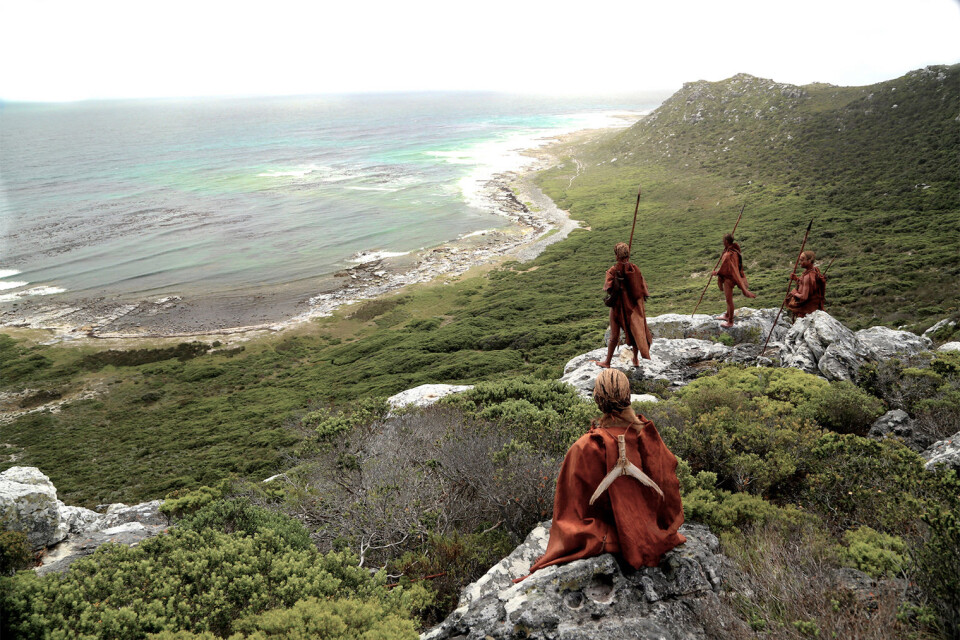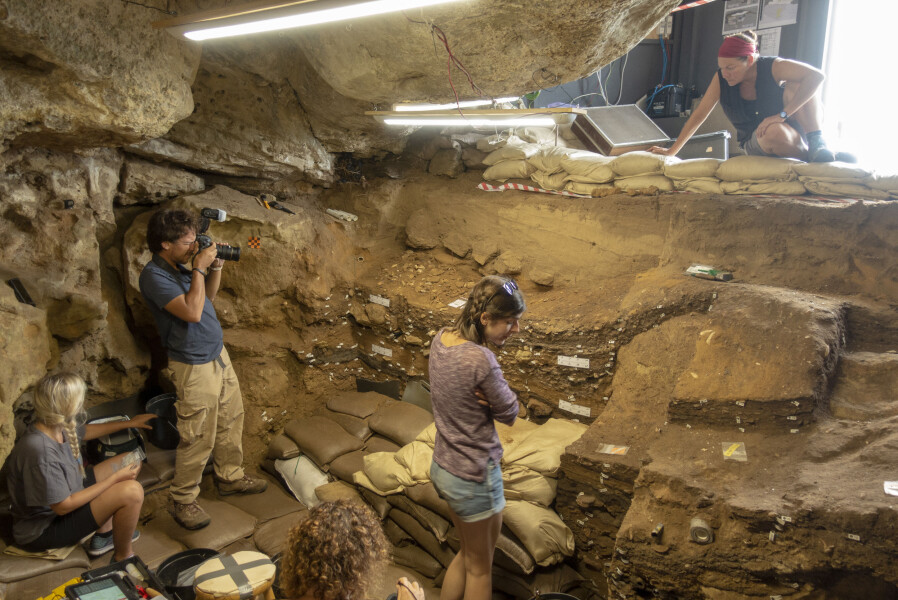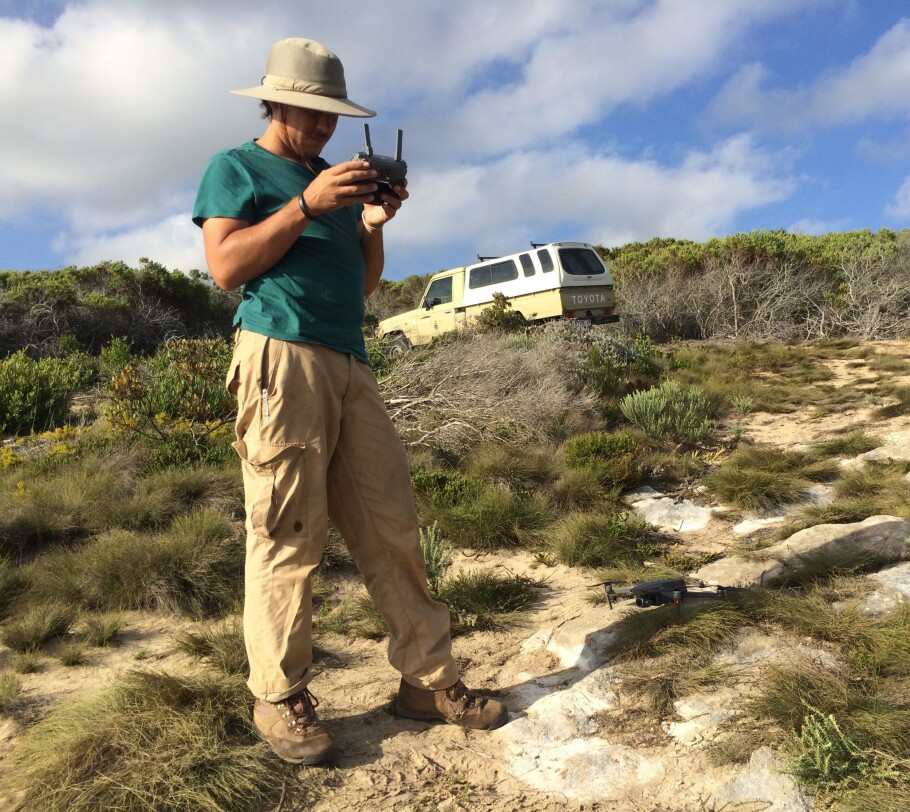This article was produced and financed by the University of Bergen - read more

New technology makes it possible to recreate the lives led by our ancestors 100,000 years ago
Blombos Cave near Cape Town in South Africa has provided the world with sensational findings about our ancestors. Researchers are now working on producing realistic 3D photographic models of the Blombos excavations and everything that is found there.
Imagine the scene 100,000 years ago. A group of hunters are strolling along the endless beach at Blombos near Cape Town. They are carrying fish and shellfish that they have caught at the coast nearby. Together they continue their journey, climbing up the steep slope towards the cliffs. On the way they discover an opening in the landscape. It turns out that they have found a cave, large enough to accommodate the whole group. They go in, light a fire, cook some food and settle down. The cave becomes their home.
Could this be how our South African ancestors discovered the Blombos Cave and made it their home 100,000 years ago?
BLOMBOS CAVE: The cave is located at the foot of a cliff in the spectacular rocky landscape at Still Bay near Cape Town. It is now 100 metres from the coast and 35 metres above sea-level, but in the past lower sea-levels may have shifted the coastline several kilometres away.
New technology allows new interpretations
"Yes, perhaps it was like that. We ask ourselves a lot of questions during our excavations in this cave. We wonder, among other things, who these people were, and why they chose to live precisely here", says Ole Fredrik Unhammer.

We meet Unhammer during field work at Blombos Cave, about 250 km east of Cape Town in South Africa. He is part of the interdisciplinary SapienCE team at UiB, which is researching the behaviour of early humans. The international research group consists of different specialists in the fields of archaeology, psychology and climate. Together they are looking for answers as to when, how and why our species began to communicate using symbols such as paint, engravings and jewellery such as shell beads. In short, how did we begin to think and behave like we do today?
"Archaeology is a science that combines facts with interpretation. It's hard to say anything with 100% certainty. It is therefore important to have good documentation methods that can create a solid basis for interpretation", Unhammer explains.
He is using a digital documentation method that is designed to produce realistic photographic 3D models of both the Blombos excavations and everything that is found there. In this way, the elements of the settlement can be fitted together and examined from several different perspectives.
"It's very exciting to work this way because it allows for completely new interpretations which give us a better understanding of how people lived their lives in the cave," says Unhammer. He hopes that in time they can recreate life in the cave by displaying the finds they have excavated in a virtual world.
RECREATING BLOMBOS CAVE: Research fellow Ole Fredrik Unhammer has developed a digital documentation method that is designed to produce realistic photographic 3D models of all the finds that are excavated. In this way, the elements of the settlement can be fitted together and examined from several different perspectives.
Life in the cave

Blombos Cave measures about 40 square meters and our ancestors first used it as their home 100,000 years ago. Groups of people repeatedly occupied Blombos for both long and short stays over the next 30,000 years. It is no surprise that the world-famous cave has proved to be packed with archaeological finds. Several of them are so sensational that history has had to be re-written. The latest groundbreaking discovery - the world's oldest drawing - is 73,000 years old and was found in Blombos Cave.
But archaeologists also have an important responsibility when digging into the past. The excavation must be done in such a way that it allows them to preserve the site for generations to come.
"Archaeology is basically a destructive science. We excavate to find out how people lived in a period well before historical records. We are looking for activity and analysing objects, remnants from hearths and living spaces to understand more about how they organised themselves in the cave. To understand how a settlement was created, we have to "dismantle it". Therefore, it is important to document everything just as it was, and where things were located when we found them. With our method, we can use the 3D models to "assemble" the settlement as it looked when we found it, and to create a more holistic understanding of the environment," Unhammer explains.

When they dig in the cave they work their way down into the sediment layer by layer. Each cultural layer is naturally defined with a variety of colours, consistency, and content, and tells a new story about the people who lived in the cave.
How did we become who we are?
"Some of the layers we have excavated out give us a sense of walking into the lives of those who have lived here. The objects we find have been are left completely untouched, protected by sand, since they last used them. They might be tools, or scraps of food. Through our surveys, we can also find out where they had their hearth - or what we would call the kitchen today", says Unhammer with a smile.
He tells us that the aim of their work is to understand what the people who lived here did and why.
"For example, we can see that they have used new types of tools and we ask why these new tools were needed. Have they made new tools because they have become advanced? Was there something about the climate that meant they had to hunt for different animals and therefore needed different tools? These are some of the questions we hope to be able to give better answers to in due course", says Unhammer.
He has just started work on his doctoral degree. In this work, he takes the documentation method one step further. Now the landscape outside the cave is also going to be documented as well.
New specialist on the team
Unhammer uses a drone to document the landscape. With a steady hand, he navigates the SapienCE drone on photo assignments.
"It has a good range and many advanced features, but it is still important to take care, so that we do not damage the equipment or disturb the wildlife in the area," Unhammer explains. He has just started to discover what the drone is capable of doing and does not yet know the results of this work.
"We hope to be able to recreate the landscape around the cave, as it looked 100,000 years ago. Our aim is to obtain more information about what the landscape looked like, and in what way the vegetation, wildlife and climate have changed over time. Such knowledge will give us a more complete picture of life in the cave, because we can see it in the context of the environment outside”, says Unhammer.
It is not impossible that the drone imagery can also guide us to new archaeological sites.
"There are very few "houses" lived in by early humans, so it would be fun if we could track down a few more. If we could find some more sites it would allow us to compare them and build a more general picture of the way that early humans lived”, says Unhammer.
The English version of this article is edited by Simon Armitage.

































